Controlling Volunteer Wheat
Volunteer wheat is probably the number one potential weed problem in double-crop soybeans. Most often in double-crop soybeans herbicides are needed to control existing weeds prior to or at planting in wheat straw. Often there will be broadleaf weeds or some grasses growing by the time the soybeans are planted. This burndown application frequently is made with a paraquat or glyphosate chemical. However, it only controls the weeds present at the time of application. Later in the growing season, volunteer wheat can become an issue in double-crop soybeans. This usually occurs due to late-season rains causing wheat seed lost off the head [...]
Is Soybean Vein Necrosis Virus a Problem?
I am going to date myself but, when working at the University of Illinois Plant Clinic during graduate school, I can remember finding these strange brown/yellow blotches or symptoms near veins on soybean leaves submitted to the Clinic. After further investigation, we knew these symptoms were not caused by bacteria or fungus. Nancy Pataky, former U of I Plant Clinic diagnostician, would collect the leaves and take them to various specialists (virologists and weed scientists) on campus hoping to get more answers. Now that I am in the industry a plant breeder said he had seen symptoms even earlier, [...]
Learn from Your Weed Challenges
As we approach harvest this year, it’s a good time to reflect on what happened during the season. It was an extremely trying year for planting and for implementing a successful weed control program. As I drive past fields up and down the state, there are many weed control failures still affecting our fields moving into harvest. Most of the weed problems I notice are giant ragweed, waterhemp and marestail. Growers need to consider mapping and recording each field individually, identifying the weeds that are present and problematic. Doing this will help set them up for a more successful [...]
Thinking About Adding Nitrogen
African soybean producer wants to know if he should be applying nitrogen to his soybeans. ILSoyAdvisor, ISA’s soybean management website, has global reach. We get emails from around the globe asking basic questions about soybean production and management practices. Our answers often have to be pretty basic as well, with some background information included. It is always fun to receive and answer these emails and help these growers learn how to produce better beans. Recently, I received an email from a gentleman in Zimbabwe. His email included a great question to consider: “I am planning [for] soybean farming this [...]
Green Stem Syndrome in Soybeans
The words green stem syndrome should shoot shivers down your spine. Generally, most producers have experienced this phenomenon where the soybean plant is fully mature but the stem of the plant remains green, making combining difficult. So, what exactly is green stem syndrome? Green stem syndrome (GSS) is a soybean disorder in which the main stem of the plant remains green after pods and seeds are fully mature. In some cases, leaves can remain attached to the upper nodes of the plant. Last year in the Effingham area, farmers experienced some of the worst GSS I have ever seen. [...]
ILSoyAdvisor Yield Challenge: Growers’ Pursuit of High Yields
The Yield Challenge is in its eighth season since launching in 2010. Over the years, a lot of Illinois producers have participated in the Challenge and tried a lot of interesting, boundary-pushing growing practices. Eric Dolbeare, a soybean grower from Nebo, Ill., is participating in the Yield Challenge for his third year. Dolbeare is entering both the 100-bushel Challenge and the Side-by-Side competition. His field was conventionally tilled, but was delayed in planting until May 18 due to wet conditions. He drilled treated seed (complete with fungicide, insecticide and ILeVO®) at a population of 175,000. This was trailed by [...]
Consider Adding Wheat
Adding winter wheat into your corn-soybean rotation has many benefits. The Illinois Soybean Association (ISA) and the wheat seed industry in Illinois are embarking on an effort to improve double-crop soybean yields in southern Illinois, while showing that the double-crop rotation can also be planted farther north into Illinois. We received an email from a farmer asking if he could “double-crop soybeans in Warren County, Illinois.” I responded that double-cropping soybeans in Warren County would have a strong possibility of success. Growers in northern Indiana and Ohio are already doing it, as well as in Michigan and Ontario—way outside [...]
Late Season Soybean Productivity
Soybeans are moving from flower to pod development and fill. So, what’s happening? As our soybeans are currently in the reproductive stages – most around R3 or later – many producers are done with their trips across the field with herbicides, fungicides and/or insecticides. The crop is now in Mother Nature’s hands, right? Or is it? I won’t argue the value of a million-dollar rain at the right time, but what if it doesn’t rain? What if it is excessively hot, or excessively humid? What if there were ways to lessen nature’s negative effects on our crops when things [...]
Are you ready for harvest?
As the weather gets cooler and the beans start to brown, harvest creeps closer and closer. In this latest podcast, CCA Soy Envoy Kevin Nelson talks about how farmers can know when their soybeans are physiologically mature and how moisture figures into harvest strategy. Physiological maturity for soybeans is achieved at the R8 stage, when 95 percent of pods are a mature brown color and the leaves have dropped, says Nelson. A quick test for harvest readiness is the bite test, where a grower can bite the bean to test for hardness. However, for more accurate readings, a handful [...]
Planning Soybean Harvest
Assessing soybean maturity and predicting harvest strategies for harvesting most acres at 13.5 to 14 percent moisture. Beans bouncing off the windshield are just one indication that you may be losing bushels by harvesting below the optimum moisture content of the grain. All throughout the challenging 2017 growing season, this year’s other CCA Soy Envoys and I have been suggesting ways to increase profitability of your soybean crop. Variety selection, early planting, weed management and control, disease management, insect pest management—these have been topics covered by the 2017 Soy Envoy blogs. As the growing season wraps up and harvest [...]

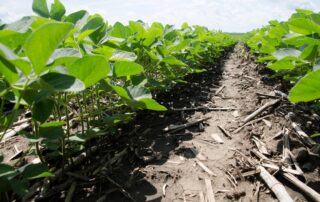
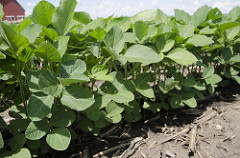
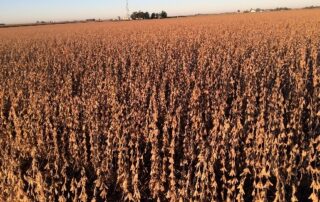
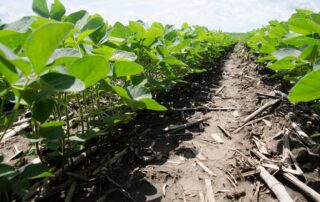
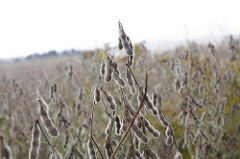
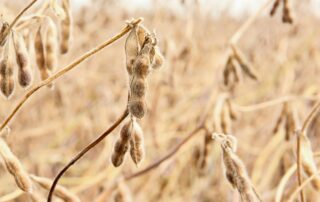
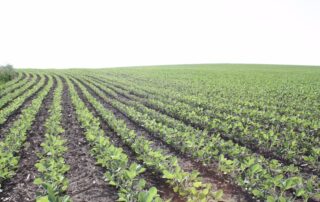
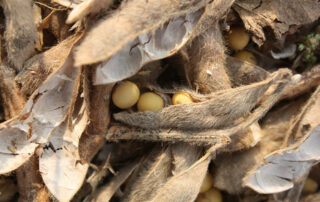
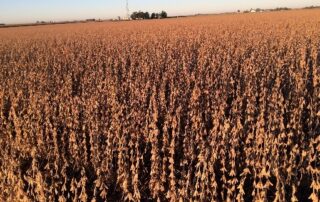
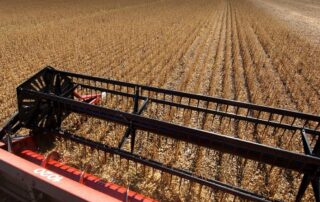

 and then
and then